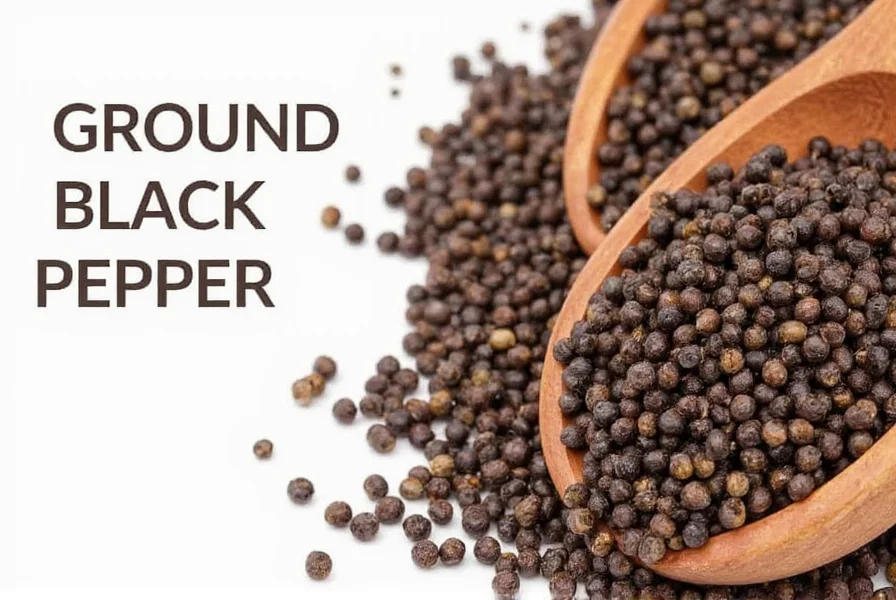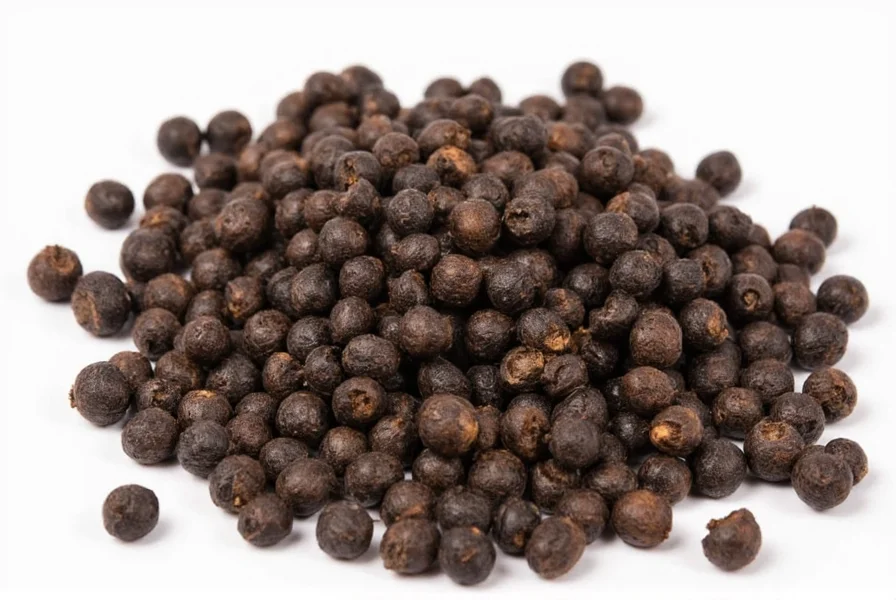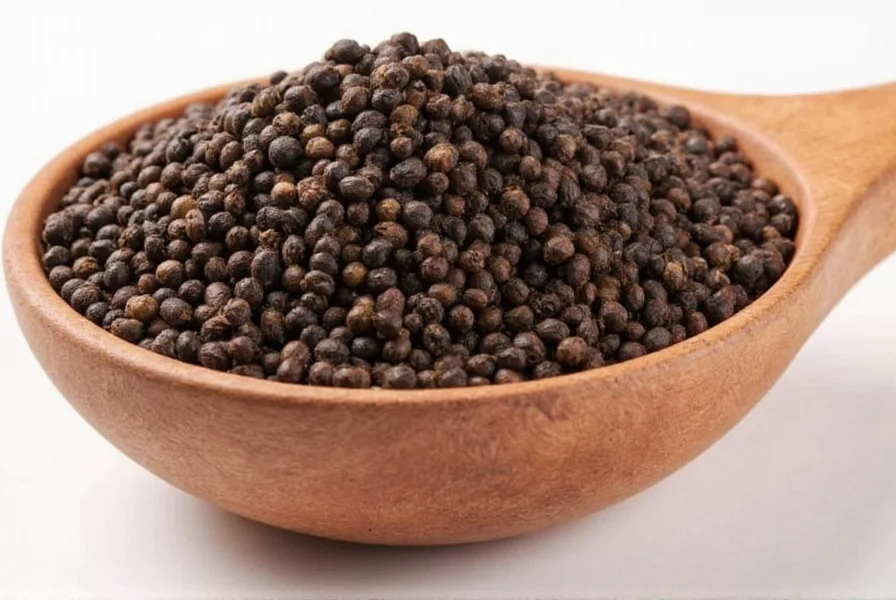As one of the most widely used spices globally, ground black pepper brings distinctive heat and complexity to countless recipes. Understanding its properties helps home cooks maximize flavor in everyday cooking. This comprehensive guide explores the science, culinary applications, and proper handling of this essential pantry staple.
What Exactly Is Ground Black Pepper?
Ground black pepper comes from the Piper nigrum plant's unripe fruit, which farmers process through specific methods. Producers harvest green peppercorns, briefly boil them, and sun-dry until they shrivel and turn black. This drying process triggers enzymatic reactions that develop piperine—the compound responsible for pepper's characteristic heat and pungency.
When comparing ground black pepper versus whole peppercorns, the primary difference lies in surface area exposure. Grinding dramatically increases the spice's contact with air, accelerating flavor and aroma compound degradation. This explains why freshly ground pepper delivers noticeably brighter, more complex flavors than pre-ground versions.
| Characteristic | Whole Black Peppercorns | Ground Black Pepper |
|---|---|---|
| Shelf Life | 2-3 years when stored properly | 4-6 months for optimal flavor |
| Flavor Profile | Bright, complex, floral notes | Immediate heat, less nuanced |
| Culinary Applications | Steeping, pickling, slow cooking | Finishing dishes, quick cooking |
| Aroma Intensity | Milder when whole | Stronger initial aroma |
Nutritional Profile and Evidence-Based Health Benefits
While primarily used for flavor, ground black pepper offers modest nutritional value and potential health benefits supported by scientific research. A single teaspoon (2.3g) contains approximately:
- 9 calories
- 0.2g protein
- 2.2g carbohydrates
- 0.6g dietary fiber
- Significant manganese (22% of daily value)
- Moderate iron (7% of daily value)
The compound piperine, making up about 5-9% of black pepper by weight, demonstrates several promising properties according to peer-reviewed studies. Research published in Phytotherapy Research indicates piperine may enhance nutrient absorption, particularly for curcumin (the active compound in turmeric), increasing its bioavailability by up to 2,000%.
Additional studies suggest potential anti-inflammatory effects and modest antioxidant activity. However, most research uses concentrated piperine extracts rather than culinary amounts of ground black pepper. Consuming reasonable quantities as part of a balanced diet appears safe for most people, though those with gastrointestinal sensitivities should moderate intake.

Culinary Applications: Maximizing Flavor in Your Cooking
Understanding how to use ground black pepper in cooking properly separates adequate dishes from exceptional ones. Unlike whole peppercorns, which benefit from longer cooking times to release flavors gradually, ground pepper works best when added later in the cooking process.
Chef Marco Pierre White famously stated, "Pepper is not a spice to be thrown in with abandon; it's a seasoning to be applied with precision." This philosophy holds true for ground pepper, which can quickly dominate a dish if overused. For most applications, adding ground pepper during the final 5-10 minutes of cooking preserves its volatile aromatic compounds.
Consider these professional techniques for optimal results:
- Finishing touch: Sprinkle ground pepper on soups, sauces, and roasted vegetables just before serving
- Dry rubs: Combine with other spices for meat rubs, allowing flavors to penetrate surface
- Emulsified sauces: Whisk into mayonnaise, aioli, or vinaigrettes for even distribution
- Balance in sweet applications: A pinch enhances chocolate desserts and fruit compotes
When exploring ground black pepper substitutes, white pepper works for light-colored sauces where black specks would be undesirable, though it lacks the complexity of black pepper. For those seeking similar heat with different flavor profiles, cayenne pepper or crushed red pepper flakes provide alternatives with varying intensity levels.
Quality Considerations and Proper Storage Methods
Selecting high-quality ground black pepper significantly impacts your dishes. Look for products with a recent grind date, as pre-ground pepper begins losing volatile compounds immediately. Darker color typically indicates fresher product, while grayish tones suggest oxidation and flavor degradation.
For proper storage of ground black pepper, follow these guidelines:
- Use airtight containers made of glass or opaque materials
- Store in a cool, dark place away from heat sources
- Avoid storing above the stove or near dishwashers
- Never keep in transparent containers on spice racks near windows
Ground pepper maintains optimal flavor for 4-6 months when stored properly. To test freshness, rub a small amount between your fingers—fresh pepper should release a noticeable aroma and leave a slight tingling sensation. Stale pepper appears dull gray and lacks both aroma and heat.

Common Questions About Ground Black Pepper
Many home cooks wonder about the health benefits of ground black pepper versus potential concerns. While moderate culinary use presents minimal risks, excessive consumption may irritate sensitive stomachs. The key lies in understanding appropriate quantities for your specific needs and recipes.











 浙公网安备
33010002000092号
浙公网安备
33010002000092号 浙B2-20120091-4
浙B2-20120091-4